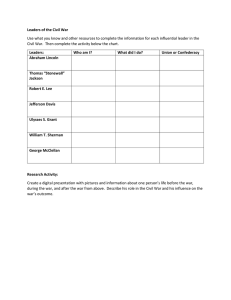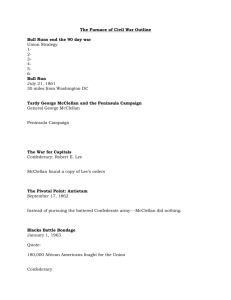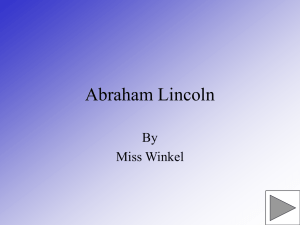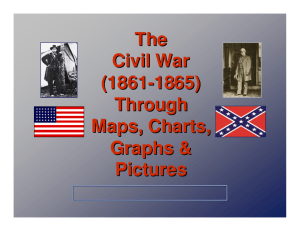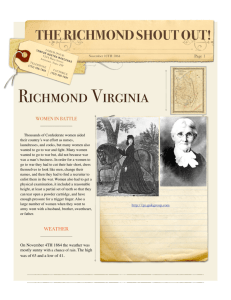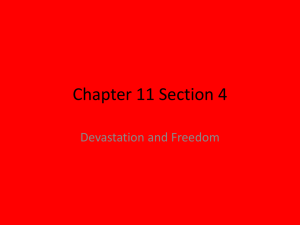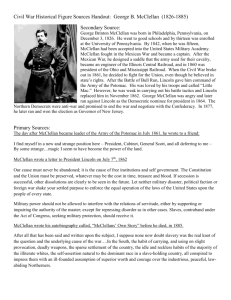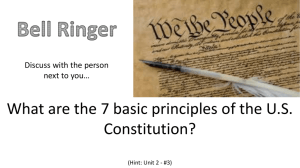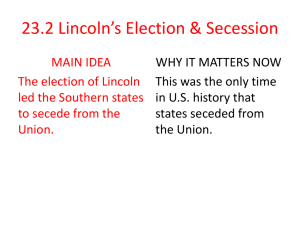Bringing the War to an End PPT
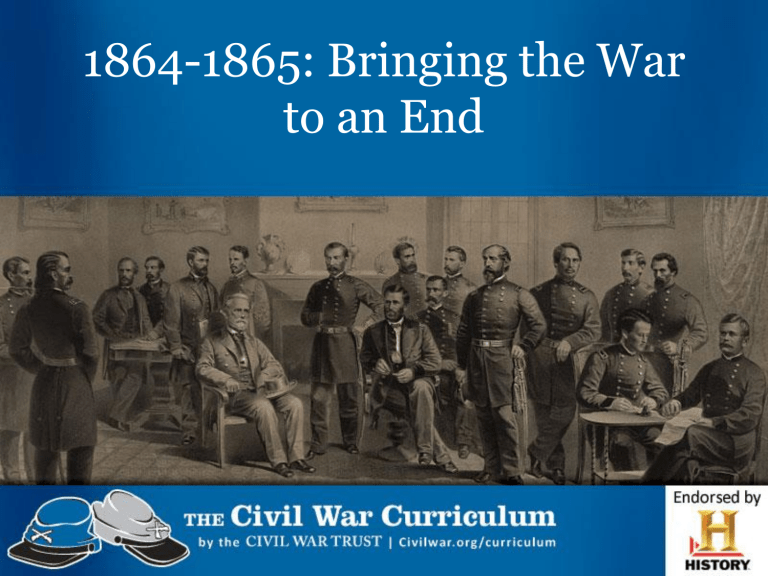
1864-1865: Bringing the War to an End
Bringing the War to an End
Election of 1864
Election of 1864
Abraham Lincoln argued that the war must be won, the slaves freed, and the
Union preserved at all costs.
George McClellan argued that the war had gone on long enough and that the South should be allowed to secede in order to save American lives. This meant that slavery would continue in the Southern states.
Election of 1864
Image courtesy of the Library of Congress
Election of 1864
Activity
Students considering the war from the perspective of Abraham
Lincoln will read the
Baltimore Platform
Election of 1864
Activity
Students considering the war from the perspective of George B.
McClellan will read the
Chicago Platform
What do you think?
Not knowing who will win or lose, is it worth continuing the war, no matter how many casualties?
1. You will now break into two groups.
Group 1 – Lincoln
Group 2 – McClellan
2. Read your platform as a group.
What do you Think?
If you were Lincoln and chose to continue fighting the war…
1. How will you win?
2. Will you continue to try to spare civilians as the war wages around them?
3. How will you persuade the Northern public to support the effort?
4. How will you persuade Congress to financially support the war effort?
5. If you win, will you punish all of the people of the Confederacy or just those who “took up arms” against the United States or neither? (How will you be able to tell the difference?)
What do you Think?
If you were McClellan and chose NOT to continue the war…
1. How will you defend your new southern border?
2. How will you address the issue of runaway slaves from the South?
3. Will you enact a law similar to the Fugitive Slave Act in order to appease the new southern Confederacy?
4. How will you deal with the expanding western border and the current U.S. territories such as Oregon and Oklahoma?
What do you Think?
Activity
Now, we will have a group debate between the Lincolns and McClellans
What do you Think
Raise your hand if you are voting for Lincoln.
Raise your hand if you are voting for McClellan.
What do you Think?
America chose, through the election of Abraham Lincoln, to continue fighting the war.
Bringing the War to an End
Abraham Lincoln appointed
Ulysses S. Grant as commander of all the U.S. forces.
Image courtesy of the Library of Congress
Bringing the War to an End
Timeline and Map
Activity
• Using your Timeline and Map worksheet, create a timeline of events leading up to the end of the Civil War.
• On the back of the page, plot the battles and in some cases, routes. Write battle names and dates on your map.
• Answer the question underneath your map: By attacking on both ends what do you think Grant was hoping to do to the Confederacy?
Confederate Surrender
The armies of the Union were able to coordinate successfully with each other and Lee surrendered at Appomattox,
Virginia on April 9, 1865.
Find Appomattox on your map and label it, Confederate
surrender.
Image courtesy of the National Park Service
Confederate Surrender
“With an increasing admiration of your constancy and devotion to your country, and a grateful remembrance of your kind and generous consideration for myself, I bid you all an affectionate farewell”
- Robert E. Lee
Confederate Surrender
“…not a sound of trumpet more, nor roll of drum; not a cheer, nor word, nor whisper of vain-glorying, nor motion of man standing again at the order, but an awed stillness rather, and breath-holding, as if it were the passing of the dead.”
-Joshua Lawrence
Chamberlain
Johnston Surrenders to Sherman
Johnston surrendered to
Sherman on April 26, 1865 in the home of James Bennett near Durham, North
Carolina.
Rebuilding
After the surrender, the difficult task of rebuilding and reunifying the country began.
Image courtesy of the National Archives
